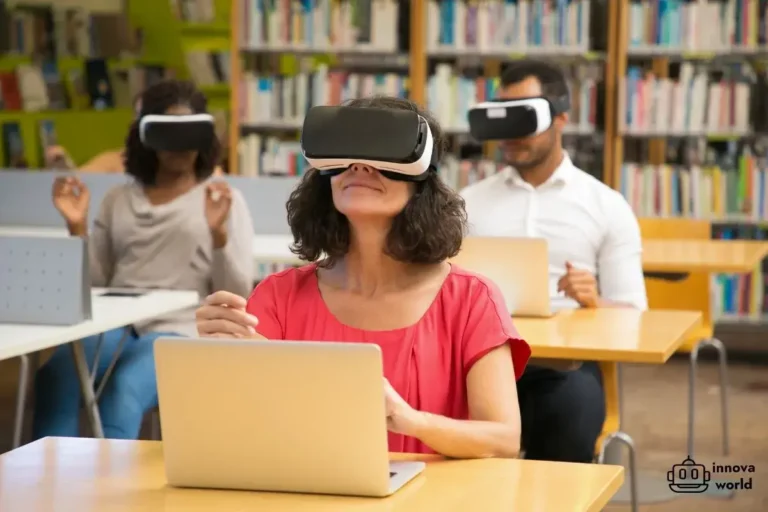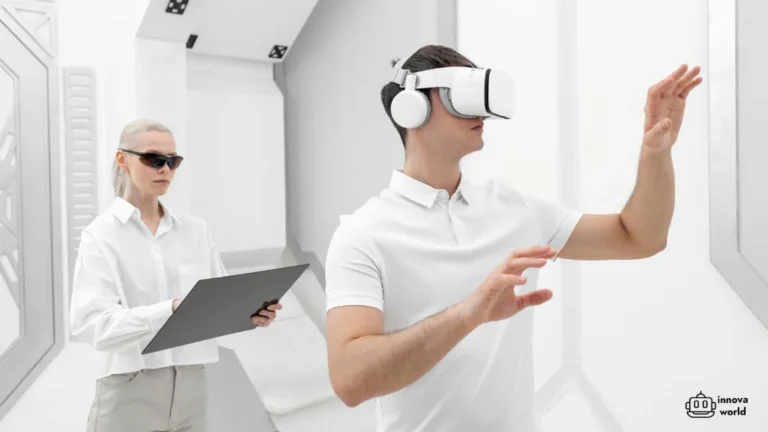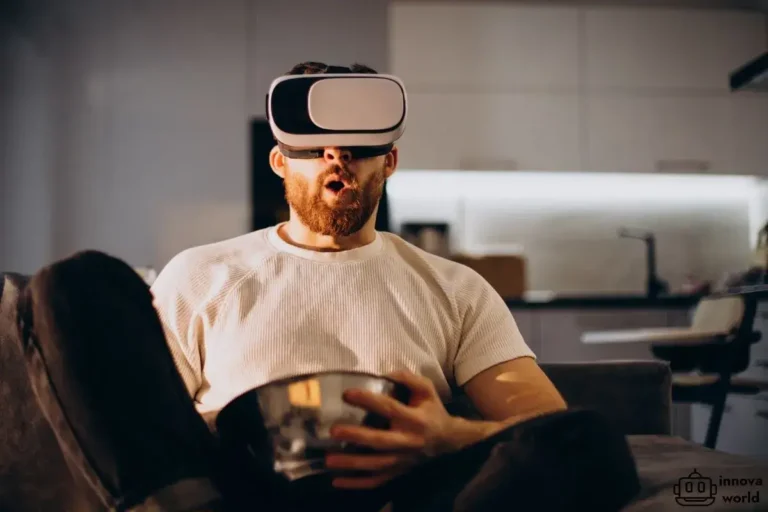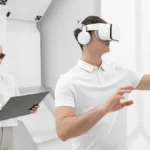Introduction: A New Dimension in Learning
Imagine walking through ancient Rome, diving into the depths of the ocean, or exploring the vastness of space—all without leaving your classroom. This isn’t science fiction; it’s the transformative power of virtual reality (VR) in education. Schools worldwide are embracing this technology to redefine how students learn, fostering curiosity and deepening understanding in ways traditional methods can’t achieve. But how exactly is VR reshaping education, and why is it capturing the attention of educators and learners alike?
Table of Contents
Immersive Learning: Bringing Subjects to Life
One of the most exciting ways VR engages students is by making abstract or complex concepts tangible. Instead of merely reading about historical events or scientific phenomena, learners can experience them firsthand. For example:
- History classes can transport learners to pivotal moments, like the signing of the Declaration of Independence or ancient civilizations.
- Science lessons can simulate laboratory experiments or showcase the inner workings of the human body.
- Art education can take learners inside famous paintings or sculptures, allowing them to analyze techniques and styles up close.
These experiences immerse students in their subjects, creating stronger connections and boosting retention rates. The sense of “being there” turns learning into an unforgettable adventure, making concepts not just learned but truly understood.
Collaboration and Social Skills in Virtual Worlds
Contrary to the assumption that VR is isolating, many applications encourage teamwork and communication. Collaborative VR platforms allow students to work together in shared virtual spaces. For example:
- In geography lessons, groups can explore global ecosystems and discuss their impact on climate change.
- In language classes, students can practice real-life conversations in virtual environments modeled after cities like Paris or Tokyo.
- Virtual group projects can simulate real-world scenarios, such as designing a sustainable city or managing a crisis.
These interactions not only improve subject knowledge but also build critical social skills, preparing learners for teamwork in real-world settings. VR also creates opportunities for students to learn from peers across the globe, promoting cultural awareness and global collaboration.
Making Education Accessible and Inclusive
VR is also breaking down barriers to education. For students with disabilities or those in remote areas, this technology provides access to experiences they might otherwise miss. Imagine a learner who cannot physically visit a museum or go on a field trip due to mobility issues—VR can bring these experiences directly to them. Additionally, VR tools often include accessibility features like voice commands or adjustable interfaces, ensuring that all students can participate equally.
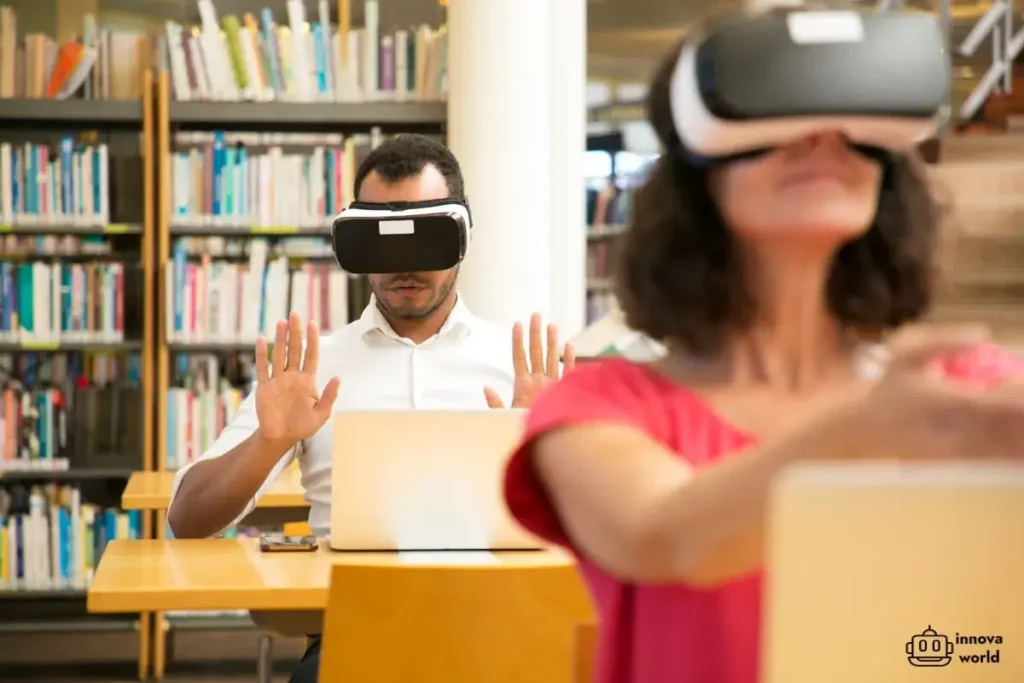
Furthermore, VR enables differentiated instruction by adapting content to the needs of individual learners. Advanced learners can explore topics in greater depth, while those needing extra support can practice foundational skills in a stress-free, immersive environment.
Gamifying Learning to Boost Engagement
Another way VR is transforming education is by integrating gamification. Many VR platforms turn lessons into interactive games, rewarding students for solving problems or completing challenges.
- Mathematics games can teach problem-solving in dynamic ways, such as constructing 3D models to learn geometry.
- Environmental education games can task learners with managing virtual ecosystems, teaching sustainability principles.
- STEM applications allow learners to conduct virtual experiments, providing instant feedback and fostering innovation.
These elements make learning exciting and motivate students to actively participate, turning education into an enjoyable and rewarding experience. learn more
Challenges and Considerations for Schools
While the potential of VR in education is vast, implementing it isn’t without challenges. Schools must navigate issues like:
- Cost: High-quality VR equipment and software can be expensive. However, many companies are developing budget-friendly solutions for educational institutions.
- Training: Teachers need professional development to effectively use VR in their lesson plans.
- Content Relevance: Schools must ensure that VR applications align with curriculum goals and standards.
- Screen Time Concerns: Balancing immersive experiences with the need to limit prolonged exposure to screens.
Addressing these hurdles is crucial to maximizing the benefits of VR while ensuring it aligns with broader educational goals. Collaboration between educators, technology providers, and policymakers will be key to overcoming these obstacles.
The Psychological Impact of Virtual Learning
Research shows that VR can enhance emotional engagement, which is a critical factor in learning. When students emotionally connect with the material, they are more likely to retain knowledge. VR allows learners to experience empathy by stepping into someone else’s shoes, such as understanding the struggles of refugees or the impacts of climate change on vulnerable communities. learn more
This emotional resonance fosters not only academic growth but also personal development, making students more compassionate and socially aware individuals.
Conclusion: The Future of Learning is Here
Virtual reality is not just a passing trend; it’s a game-changing tool that has the potential to revolutionize education. By creating engaging, interactive, and accessible learning environments, VR is equipping students with the skills and knowledge they need for a rapidly evolving world.
As schools continue to explore and refine its applications, the role of VR will likely expand even further—bridging gaps in education and making learning an exciting journey for all. Whether through exploring ancient ruins, conducting groundbreaking experiments, or simply making lessons more relatable, VR is ensuring that students are not just passive learners but active participants in their education.
So, are we ready to fully embrace this innovative technology? The future certainly looks immersive.nly looks immersive.

